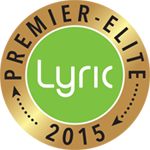Yes, it’s true that hearing aids assist people with hearing loss to pick up sounds better and clearer, but in public places or crowded conference rooms, sometimes people experience a difficulty hearing due to the extra background noises or frequencies they pick up. This is where hearing loops come to the rescue within conference rooms, lecture halls and public places like airports. They offer an unprecedented advantage to the hearing impaired community due to the emergence of more community awareness for hearing problems and the availability of affordable technology. Those with hearing impairments no longer have to sit in silence, afraid that they can’t respond appropriately to questions posed in a business meeting because the background noise is overpowering detailed voices.
What Are Hearing Loops?
Necessary in conference rooms and meetings, hearing loops offer hearing impaired people a better way to connect sound with their existing devices. This is all done without extra cumbersome equipment. In fact, you may not even know the hearing loop is there, it’s that unassuming. Operate under the principle of two basic forms of technology: the hearing aid itself and a cable that circles a room, the hearing loop has a cable that detects detailed sounds within that particular area. This is so people with hearing aids can detect crystal clear detail on conversations where they are being spoken.
A Closer Look
Hearing loops are made possible by a simple two-part system involving placing a loop strategically around a room or area to assist help those with hearing aids connect to that directed sound. They basically work in tandem with t-switches present in modern hearing aids and cochlear implants, all inspired by telephone technology. The transmission sends a powerful wave to telecoils in the hearing aids, using the same components in handset telephones responsible for a higher range of frequency and signal when away from their home base.
Fueled by advancements in telecoil technology, hearing loops are great at detecting electromagnetic sounds that are transmitted to the user. The hearing aid wearer is then treated to a clear, crisp sound that he would miss out on with a hearing aid alone. If you require additional amplification, you can use this with a microphone for even better sound.
Implementation
Hearing loops bring a unique element to the table — literally – in conference rooms across America, and they’re being considered a law in many states and nations. Stay tuned to find out where else you’ll likely see the implementation of hearing loops in public areas.






